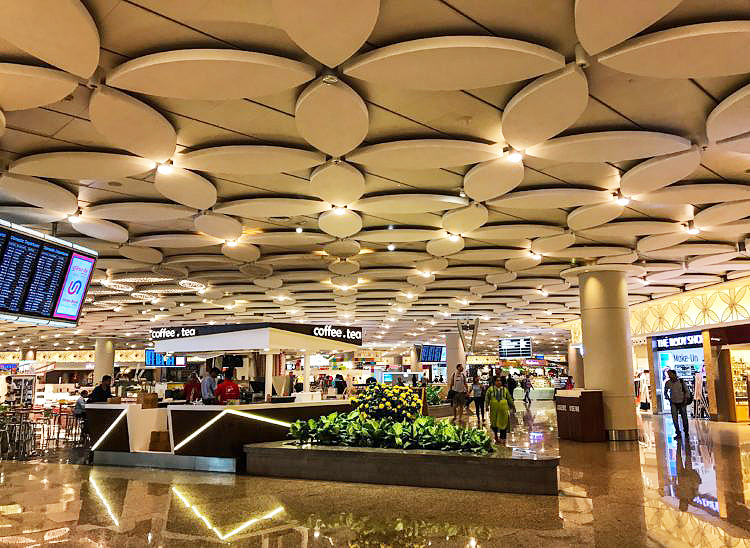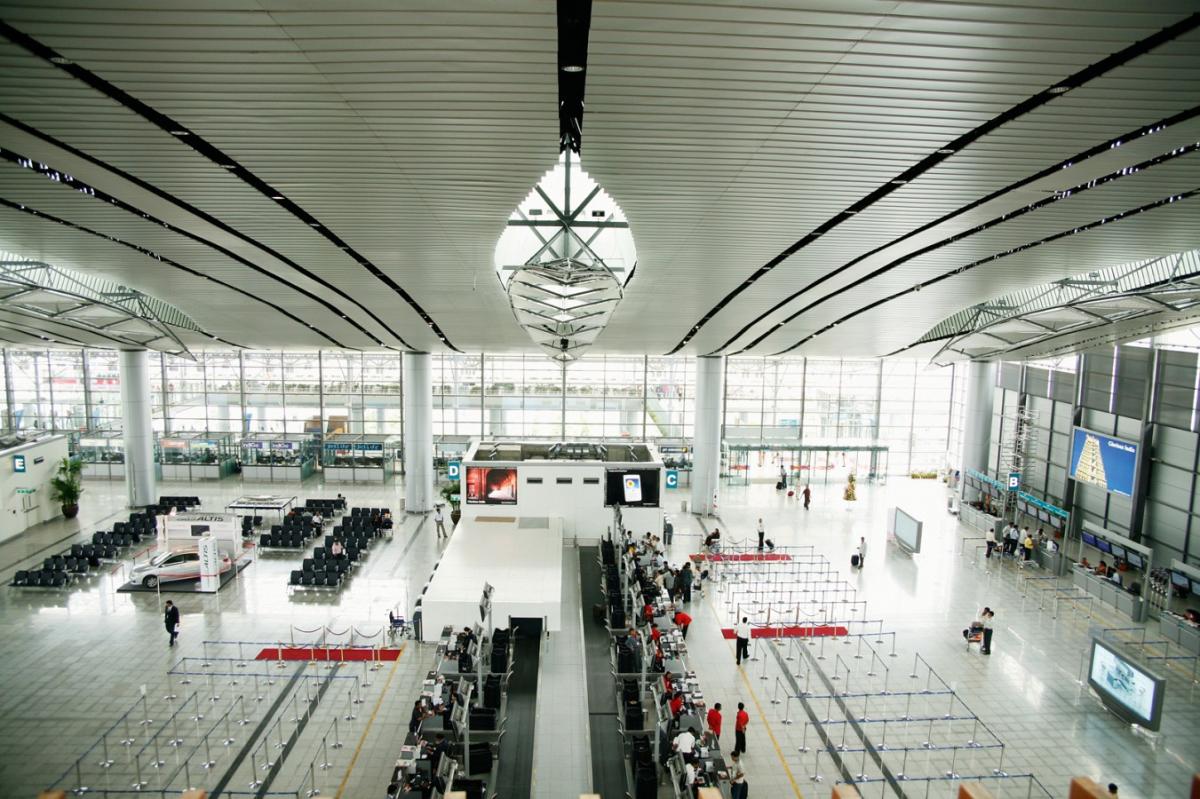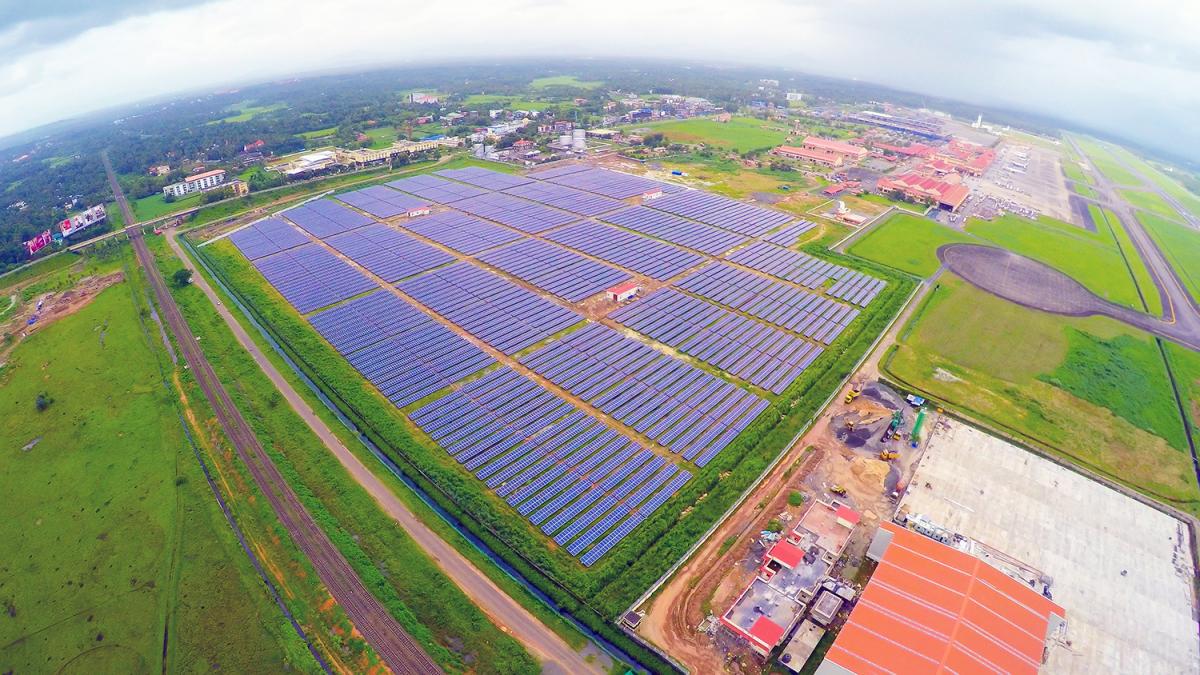
AIR TRAVEL MAY STILL COME WITH A LARGE CARBON FOOTPRINT,
YET AIRPORTS AROUND THE WORLD ARE INCREASINGLY TAKING
STEPS TO MAKE SURE THE DEPARTURE AND ARRIVAL STAGES OF A
TRAVELLER’S JOURNEY ARE AS GREEN AS POSSIBLE.
Currently, only 33 airports around the world around the world can claim to be carbon neutral. Of these, five are in the Asia Pacific region—largely in India. Delhi, Mumbai, Bengaluru, and Hyderabad airports all received the Level 3+ carbon neutrality certification, the highest level of environmental achievement given to airports for their contribution in the areas of greenhouse gas management, according to the Airport Carbon Accreditation Scheme.
And this is largely down to new business models. “Privatizing airports in the last decade has resulted in world-class airports that are sustainable,” says Kumar Ramaiah, Director, Energy and Sustainability Services, Asia Pacific, JLL. “Most of these airports are developed on the Public Private Partnership (PPP) model. These partnerships are often supported by the World Bank. When the World Bank gets involved, the focus includes sustainability as well.”
Solar lighting catches on
Carbon neutrality aside, Indian airports are meeting numerous benchmarks on the sustainability front. Delhi, Mumbai, Bengaluru and Hyderabad airports are also all LEED certified, with building designs that make optimal use of light, water, and energy.

southern India is aiming to become a 100 per cent LED-lit airport.
Image courtesy of architecturenorway.
At Hyderabad Airport more than more than 75 percent of lights along the crucial airside area [the side of an airport terminal from which aircraft can be observed] have been replaced with LEDs, saving the airport 2.2 million units of electricity yearly. It’s now aiming for 100 percent LED lighting and has also commissioned a 5-megawatt solar power plant.
Over in Kolkata, its international airport is planning to use empty acreage to set up a 15-megawatt solar farm that will cut its electricity bills by 25 percent. Meanwhile, Delhi’s international airport has a 2.1-megawatt solar installation by the runway, and also has access to an additional 5.7-megawatt capacity solar plant.
The push towards clean energy and sustainable design in Indian airports is not limited to its top-tier cities either. The international airport at Cochin, which was the first airport in India to be developed through a PPP model as far back as October 1991, recently became the first solar-powered airport in the world. Its 46,150 solar panels produce 50,000 to 60,000 units of electricity per day—more than enough to meet its energy needs with surplus energy going into the wider electricity grid.

Going beyond solar, new international terminals at the Vadodara airport in Gujarat and the Chandigarh airport in North India have an eco-friendly design, including features such as rain water harvesting and state-of-art sewage treatment.
Greater impetus for sustainability
The push for green airports coincides with India’s high levels of passenger growth, especially in terms of domestic travellers, where it currently ranks behind the United States and China. By 2025, India is predicted to overtake the U.K. as the third largest aviation market in the world. The country will see 322 million new air passengers over the coming two decades, according to the IATA.
Ramaiah observes this blistering growth is being mitigated with a more sustainable approach to airport development. “Airports are large buildings with significant electrical loads, and they need to play their role in helping to reduce emissions. “And as water is becoming a scarce commodity in India, it’s all the more essential that airports play a role in helping to incorporate sustainable water-saving design and features,” he says.
The sustainability shift is part of a wider shift towards green thinking within real estate. India’s cities have been embracing green buildings, with some 644 projects obtaining LEED certification. “Almost all infrastructural projects in the country now target sustainability,” says Kumar. “It’s becoming mainstream, so it’s more noticeable when companies aren’t building to meet green standards rather than when they are.”
The way forward
For Indian airports, sustainability is an ongoing journey. The Airports Authority of India (AAI) aims to install 146 megawatts of solar capacity across its 143 airports while supporting other measures, including greater use of LED lighting and water conservation. In partnership with the Council of Scientific and Industrial research, AAI is also also undertaking a "noise mapping" exercise across all its airports to better understand noise-pollution levels.
Indeed, as Kumar points out, green thinking also needs to take into account the infrastructure surrounding the airport to ensure good public transport links and charging points for electric vehicles.
“While reducing carbon emissions from buildings is important, these softer green measures cannot be ignored if India’s airports are to be truly sustainable for future travellers,” he says.
Technology also has a huge part to play. “The landscape of renewable energy is fast changing, and there are new solutions like smart metering technologies and energy storage, which are becoming important features,” notes Ramaiah.
“Even green building certification has become dynamic through platforms like ARC by the U.S. Green Building Council. While there is still a long way to go, this new technology can help India meet its sustainability commitments and ensure it has some of the greenest airports in the world.” 
This article was reprinted in its entirety from Real Views, a news site from JLL that features stories exploring the world of real estate and its impact on the wider business world. Read the original article here. Topmost image: Inside Chhatrapati Shivaji International Airport (Mumbai International Airport) Terminal 2. Image from Shutterstock.


